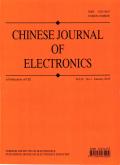A Time-Frequency Representation Method Based on ETF-MDNet for Radar Target Micro-Motion Features
IF 3
4区 计算机科学
Q3 ENGINEERING, ELECTRICAL & ELECTRONIC
引用次数: 0
Abstract
This paper proposes a deep learning-based time-frequency representation approach that employs the enhanced time-frequency micro-Doppler network (ETF-MDNet) model to improve the characterization of micro-Doppler features for radar targets, particularly “low, slow, and small” ones. The ETF-MDNet model consists of four key components: the micro-Doppler target signal input module, the basis function selection module, the feature aggregation module, and the energy concentration module. A notable characteristic of this method is its utilization of the inherent adaptive learning capabilities of deep learning, which are combined with an attention mechanism to enhance the aggregation of time-frequency energy. This integration optimizes the method's capacity to represent micro-motion features across both channel and spatial dimensions. Consequently, this approach effectively captures the micro-motion information of the target while suppressing extraneous noise. In comparison to traditional short time Fourier transform, generalized warblet and reassigned spectrogram analysis methods, the proposed method achieves an average enhancement of 31.5% in time-frequency energy concentration, higher time-frequency energy aggregation, and the ability to reveal micro-motion feature details not captured by traditional methods.基于ETF-MDNet的雷达目标微运动特征时频表示方法
本文提出了一种基于深度学习的时频表示方法,该方法采用增强型时频微多普勒网络(ETF-MDNet)模型来改进雷达目标的微多普勒特征表征,特别是“低、慢、小”目标。ETF-MDNet模型由四个关键部分组成:微多普勒目标信号输入模块、基函数选择模块、特征聚合模块和能量集中模块。该方法的一个显著特点是利用了深度学习固有的自适应学习能力,并结合注意机制增强时频能量的聚集。这种集成优化了该方法在通道和空间维度上表示微运动特征的能力。因此,该方法可以有效地捕获目标的微运动信息,同时抑制外来噪声。与传统的短时傅立叶变换、广义小波变换和重分配谱图分析方法相比,该方法在时频能量集中、时频能量聚集和揭示传统方法无法捕获的微运动特征细节方面平均提高了31.5%。
本文章由计算机程序翻译,如有差异,请以英文原文为准。
求助全文
约1分钟内获得全文
求助全文
来源期刊

Chinese Journal of Electronics
工程技术-工程:电子与电气
CiteScore
3.70
自引率
16.70%
发文量
342
审稿时长
12.0 months
期刊介绍:
CJE focuses on the emerging fields of electronics, publishing innovative and transformative research papers. Most of the papers published in CJE are from universities and research institutes, presenting their innovative research results. Both theoretical and practical contributions are encouraged, and original research papers reporting novel solutions to the hot topics in electronics are strongly recommended.
 求助内容:
求助内容: 应助结果提醒方式:
应助结果提醒方式:


